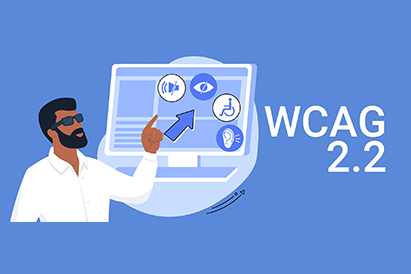Simulation-Based Learning

Overview
Simulation-Based Learning has become an increasingly sought-after element in the realm of learning and development, revolutionizing how organizations equip and educate their workforce. By providing a secure environment where learners can make mistakes and understand the consequences, simulation-based learning fosters experiential learning, empowering learners to enhance their skills and knowledge while gaining a profound understanding and a heightened sense of personal achievement. Unlike traditional training methods like lectures and workshops, simulation-based learning has demonstrated superior effectiveness in engaging learners and facilitating better information retention.Thanks to the rapid advancements in technology, creating realistic simulations has become increasingly accessible. This allows organizations to mitigate risks during training by developing online simulations that emulate real learning environments, thus providing an immersive and authentic learning experience.
What is Simulation-Based Learning?
As the name suggests, Simulation-Based Learning involves the use of simulations to recreate real-life scenarios and experiences for learners. These simulations provide a realistic learning environment where learners can actively participate, make decisions, and witness the consequences of those decisions in a safe and controlled setting. By offering interactive and immersive experiences, Simulation-Based Learning goes beyond traditional instructional methods, promoting engagement and facilitating a deeper understanding of the subject matter.Key components of Simulation-based learning
Simulation-based learning comprises several key components that contribute to its effectiveness and impact on the learning process. These components include:-
Realistic Scenarios
Simulations present learners with authentic and relevant scenarios that mirror real-life situations or tasks within the learning context. These scenarios allow learners to apply their knowledge and skills in a practical and meaningful way. -
Interactive and Immersive Environment
Simulation-based learning creates interactive and immersive environments where learners can actively engage with the content. This may involve the use of multimedia elements, virtual reality, or gamification techniques to enhance learner involvement and motivation. -
Active Participation
Learners actively participate in the simulation, making decisions, solving problems, and engaging in hands-on activities. This active involvement fosters a deeper understanding of the subject matter and encourages critical thinking and problem-solving skills. -
Feedback and Assessment
Simulations provide learners with immediate feedback on their actions and decisions, allowing them to assess their performance and learn from their mistakes. This feedback loop helps in reinforcing learning and promoting continuous improvement. -
Guided Reflection
Simulation-based learning often includes opportunities for learners to reflect on their experiences within the simulation. Guided reflection activities encourage learners to analyze their actions, identify strengths and areas for improvement, and connect the simulation experience to real-world applications.
What are the Benefits of Simulation-Based Learning?
Simulation-Based Learning offers numerous advantages over traditional instructional methods. Here are some key benefits:-
Realistic and Engaging
Simulations create immersive and authentic learning experiences, capturing learners’ attention and increasing their motivation. By providing interactive and visually stimulating environments, simulations enhance learner engagement and promote active participation. -
Safe Learning Environment
Simulations provide a secure space for learners to make mistakes, experiment, and learn from them without real-world consequences. This fosters a risk-free environment that encourages exploration and builds confidence in handling challenging situations. -
Active Learning and Retention
By actively participating in simulations, learners become more involved in the learning process. This hands-on approach enhances knowledge retention, as learners experience concepts in a practical context and can apply them immediately. -
Immediate Feedback and Reflection
Simulations enable instant feedback, allowing learners to assess their performance and identify areas for improvement. Learners can reflect on their actions, understand the consequences of their decisions, and refine their strategies accordingly. -
Scalability and Cost-Effectiveness
Simulation-Based Learning offers scalability, as it can be easily replicated and delivered to a large number of learners simultaneously. This makes it a cost-effective solution for organizations looking to train geographically dispersed teams.
Case studies
-
Conversational Simulation for a large FMCG
Zilliobit collaborated with a large FMCG organization to create a simulation-based learning program focused on objection handling. The course aimed to provide participants with a deep understanding of objections, their significance in sales, and strategies to overcome them using the ACDC framework. Through theoretical modules, role-playing exercises, and a comprehensive learning review, participants gained practical experience and honed their objection handling skills. Zilliobit’s innovative approach allowed learners to simulate real-world scenarios, fostering engagement and confidence in handling objections. By the program’s conclusion, employees were equipped with the knowledge and techniques necessary to effectively navigate objections and enhance sales performance. -
A blend of sales simulation with software simulation for a large Banking firm
Zilliobit developed a simulation-based learning program for a banking firm, focusing on Questioning and Listening skills. The course aimed to enhance participants’ ability to engage in effective and customer-centric selling conversations. With a combination of role-playing exercises and software simulations, learners practiced their communication skills while also mastering the use of specific software tools. The program’s objectives included emphasizing the importance of clear communication, highlighting the significance of Questioning and Listening skills, understanding the Customer Needs Hierarchy, and identifying customer needs through effective questioning techniques. The dual simulation approach provided a comprehensive learning experience for sales professionals, enabling them to excel in both customer interactions and software utilization. -
How Zilliobit Can Help Your Organization with Simulations?
Zilliobit is a leading provider of Simulation-Based Learning solutions designed to transform organizational training. With their expertise in instructional design, technology integration, and immersive learning experiences, Zilliobit offers a comprehensive suite of tools and services to support Simulation-Based Learning initiatives. By leveraging Zilliobit’s solutions, organizations can create engaging and effective simulations that enhance learning outcomes, improve skill development, and maximize the overall training impact.
Exploring simulation-based learning for your course curriculum?
Let’s Talk


